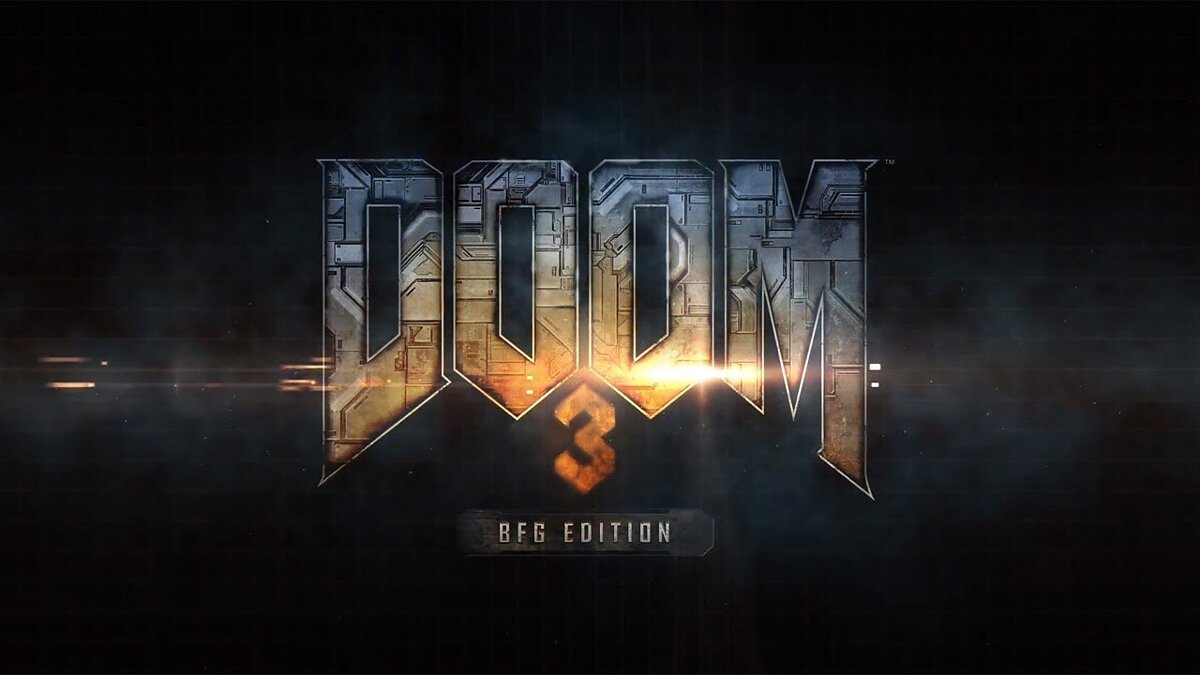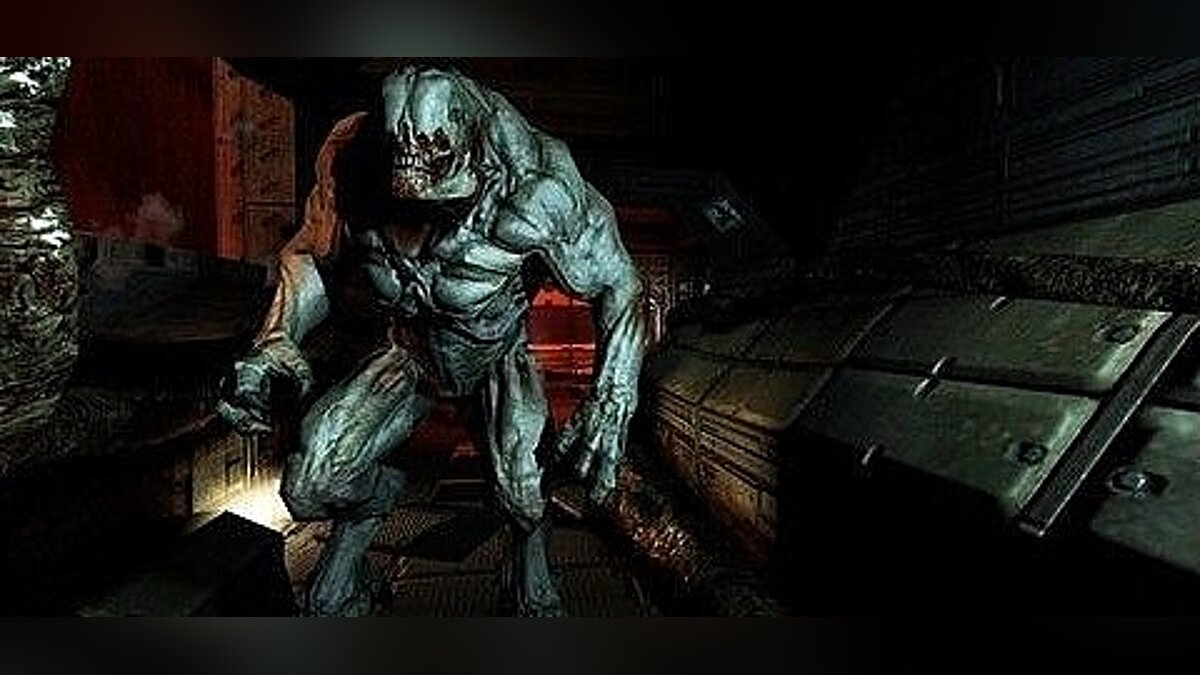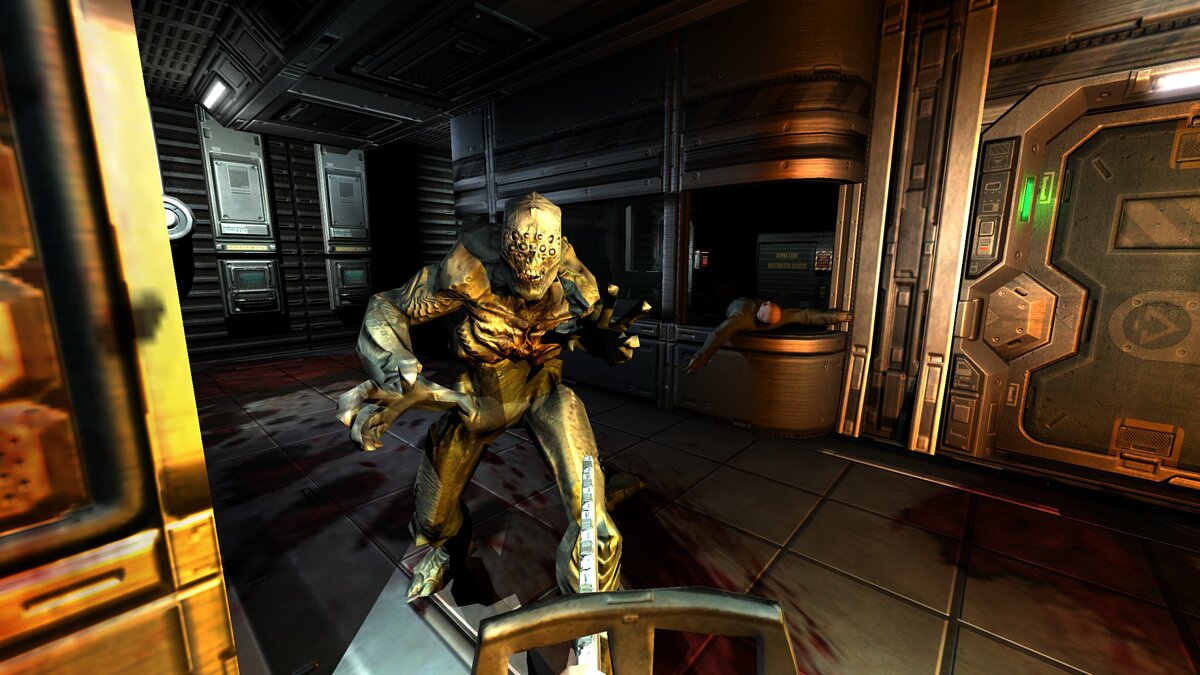Doom 3: BFG Edition
Doom 3: BFG Edition is a special edition of the first-person shooter Doom 3 with improved graphics and a number of other innovations. In addition to the game... Read more
Doom 3: BFG Edition is a special edition of the first-person shooter Doom 3 with improved graphics and a number of other innovations. In addition to the game itself, the edition includes the official expansion Resurrection of Evil and seven completely new levels combined into The Lost Mission campaign.
The edition also includes technically enhanced but gameplay-original versions of DOOM (1995) and DOOM 2, which run on modern PCs without an emulator.
In October 2012, Bethesda Softworks released Doom 3 BFG Edition—a version adapted to the conditions of that time. It is difficult to call it a re-release, as the changes were cosmetic:
- The user interface was universally redesigned to simplify and support widescreen monitors and TVs;
- The field of view (FOV) was narrowed, and the zoom function was removed;
- The graphics in the Xbox 360 and PlayStation 3 versions were almost comparable to the PC, with seams between textures removed everywhere and texture resolution increased;
- On PC, performance was improved, Full HD resolution and 120 Hz refresh rate, 3D TVs, and Oculus Rift support were added;
- Full compatibility with Windows Vista and above;
- Steam achievements integrated;
- The Doom and Doom 2 versions learned to work with Windows Vista and above, support Steam achievements, Full HD resolution monitors, and up to 120 Hz refresh rate. Mouse and keyboard control became even more responsive.
- In all three games, numerous outdated technical elements and systems were either removed or replaced with new ones.
To develop the game universe, id Software hired professional science fiction writer Matthew Costello. The studio intended to reboot the original at a higher level, but Doom 3 was supposed to scare and evoke a sense of horror, rather than offer mindless shooting.
The game's action still takes place on Mars in the 22nd century. Humanity has long gone beyond its home planet, but the lack of energy threatens the existence of civilization. In this regard, the Union Aerospace Corporation (UAC) is building scientific bases on Mars, where it is searching for powerful energy sources based on new physical principles.
By the middle of the 22nd century, UAC scientists and engineers have made significant progress in their research, simultaneously developing prototypes of numerous devices, including the famous BFG 9000 super-weapon.
Unexpectedly, the corporation stumbles upon ancient alien ruins on the surface of Mars. The long-extinct Martians developed teleportation technology through a dimension reminiscent of Christian Hell and implemented it "in hardware." Interested in the find, UAC directs all efforts to its research.
The Doom 3 script is detailed down to specific days, months, and years. As the game progresses, the player reads, listens to, and watches numerous records, diaries, notes, and emails from scientists, managers, technicians, and security staff of the UAC Mars base.
The left messages reveal information about the events happening in the game world and directly on Mars, reflect the feelings and concerns of people, give logic to what is happening, and meaning to the actions of the heroes.
If you play without delving into the details, the impression will be very blurred or the plot will seem unnecessary, since all dialogues and in-engine scenes concern current problems — go there, do this, find that, look at the result. Periodically, the player learns some key information that moves the events forward.
Everything starts as in the first Doom — the protagonist arrives at the Martian base, appointed as a security guard. Then the differences begin. The main character arrives with UAC inspector Elliot Swann, who is supposed to investigate employee complaints, increased incidents, and strange deaths.
The main antagonist is Dr. Malcolm Betruger, who was engaged in teleportation technology and ultimately succumbed to the forces of Evil. His maniacal idea is to let the Devil's servants into our world so that they conquer Earth and turn people into slaves or demons.
The main confrontation is between Swann and Betruger, freedom of choice in a number of moments is just an illusion, the protagonist does not affect the events or the ending in any way. Despite all the advantages, meticulous elaboration, unexpected moments, and plot twists, the player feels limited by the script's framework.
The BFG Edition version has some gameplay changes compared to Doom 3. The flashlight was mounted on the protagonist's shoulder, it can be used together with the weapon. The light from the flashlight and shots now project reflections and shadows, improving situational awareness.
Pistol, shotgun, machine gun, minigun, plasma gun, rocket launcher, BFG9000, and chainsaw — that's all the weapons, no modifications or variability like in Doom of the 2016 model. The protagonist carries much fewer bullets, excess armor and health are not saved. Enemies can knock off the aim, which can cost the hero's life.
The feature of Doom 3 was the "soul cube" — a weapon that appears after killing one of the bosses in Hell and allows you to deal 1,000 damage to any monster, which greatly harms even bosses. In addition, the "soul cube" absorbs and transfers the victim's health to the bearer.
The changes allowed increasing the dynamics of Doom 3's gameplay so that the game did not resemble a tactical shooter but became closer to the classic gameplay of shoot — run forward — shoot. But you still have to act carefully, not stick out, and shoot accurately.
The capacity of the protagonist's "pockets" has increased, he can carry more bullets, and the ammunition limits for each weapon have slightly increased. If you gain more than 100 armor points, they will be saved and not start to melt over time, returning to the limit as in the original.
Playing the game on an easy difficulty level has become easier — the protagonist uses more health and armor points, and carries even more ammunition.
The BFG Edition playthrough differs from the original Doom 3 playthrough — all moments when the game tried to scare were removed or reworked. The shooter component now dominates, with all the caveats about its scarcity.
So, the "presentations" were removed — when the protagonist first encountered a new monster from the bestiary, the camera would pull back and show a small scene. In scripted events, enemies do not crawl away but attack the player. For example, in one of the first administrative buildings, an imp crawls on the roof. In Doom 3, it ran away, but in BFG Edition, it attacks.
Locations are linear; usually, it's a winding gut connecting large rooms, the level design is primitive, with no secret passages or hidden rooms, and secrets are revealed very simply. There are practically no open spaces in the game, only rooms and endless corridors.
During the playthrough, the player will visit almost half of Mars — various UAC complexes and laboratories, the central city, transport hubs and factories, Mars caves, and, of course, will go to Hell several times. However, the content of all levels is monotonous, and due to the pitch darkness, they are simply not memorable.
This is related to the focus on the plot and the designers' desire to scare the player, who is urged to move forward to keep the scenario's wheel turning.
There is a lot of shooting, but the feel of the weapons is completely different; they do not provide the same pleasure as before. The mechanic of respawning enemies underfoot (since the locations are small) is scary only for a couple of hours, and then it starts to get annoying.
The bestiary includes both well-known creatures (various types of Zombies, Commandos, Imps, Pinky, Lost Soul, Revenant, Cacodemon, Hell Knight, Baron of Hell, Archvile, Mancubus, Phantom), as well as several new ones:
- Spiders — nasty disgusting creatures of two types, they rush in packs and attack up close;
- Cherubs — babies with metal limbs and wings, they screech disgustingly, fly up and attack;
- Larva — a two-headed biting demon, reminiscent of an Imp but attacking in close combat;
- Hell Crusher — an armored enemy with melee and ranged weapons;
- Hell Hunter — a powerful demon in three variants, a hybrid of Hell Crusher with Cacodemon, Mancubus, or Hell Knight;
Since all efforts of id Software were focused on the single-player mode of Doom 3 and its plot, the studio's game designers sincerely believed that the game did not need a large-scale multiplayer. The expectation was that Doom 3 would be liked for its story, and its single-player campaign would be replayed regularly.
Therefore, only one mode was implemented for network play — "team deathmatch." Several players would gather on one map and could use all the weapons and grenades available in the solo mode. The number of maps is small. No leveling up, statistics, or unlockable content.
Doom 3: BFG Edition servers operate in Europe and the USA. Players cannot set up their own server or use a lobby to gather a group or kick a player with high ping. The game itself connects to the nearest server, and the balancer assigns teams. It is not uncommon for participants' ping to reach 500.
- The game stands out for its unique atmosphere, especially the terrifying moment of Hell breaking into our dimension at the end of the first chapter.
- Cheat codes from the first two parts of Doom do not work in the third, but by opening the console and typing them, you can get a response: «Ваша память вас не подводит».
System requirements and PC test
- Windows Vista
- CPU: Intel Core 2 Duo
- RAM: 3 Gb
- Free Space: 11 Gb
- VRAM: 512 Mb
- Video Card: nVidia GeForce 9800
- Windows Vista
- CPU: Intel Core 2 Duo
- RAM: 4 Gb
- Free Space: 11 Gb
- VRAM: 768 Mb
- Video Card: nVidia GeForce GTX 260





















![Doom 3 BFG Edition EN Global (Global) [Steam]](/uploads/shops_images/gamivo/26bf98f755923dcaab5c2039dbb25f98_full.webp)






![Table for Cheat Engine [UPD: 01/15/2021]](https://files.vgtimes.com/download/posts/2021-01/thumbs/1610871272_ss_69af57e45c0d66506b568d816ac95f6dd357f941.1920x1080.jpg)
![Trainer (+6) from 12/03/2021 [WeMod]](https://files.vgtimes.com/download/posts/2021-12/thumbs/1638608202_2021-12-04_115444.jpg)
